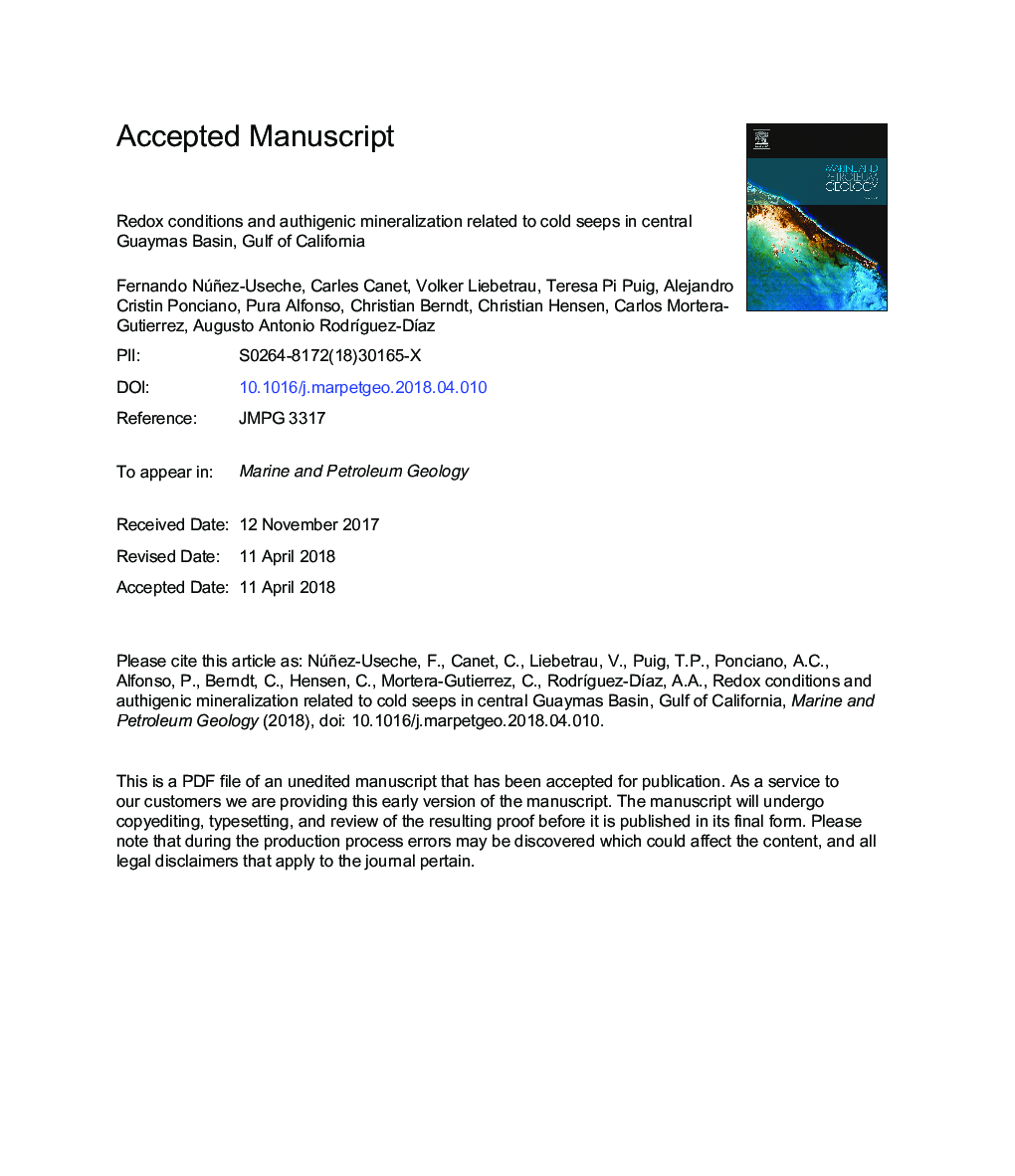| Article ID | Journal | Published Year | Pages | File Type |
|---|---|---|---|---|
| 8909021 | Marine and Petroleum Geology | 2018 | 57 Pages |
Abstract
Authigenic carbonate crusts, surface muds and bivalve shell fragments have been recovered from inactive and active recently discovered cold seep sites in central Guaymas Basin. In this study, for first time, redox conditions and fluid sources involved in mineral precipitation were investigated by analyzing the mineralogy and textures of surface samples, along with skeletal contents, and C, O and S isotopes variations. The δ13C values of aragonitic bivalve shells and non-skeletal carbonate from some surface muds (1â° to â3.7â° V-PDB) suggest that carbonate precipitated from ambient dissolved inorganic carbon, whereas fibrous aragonite cement and non-skeletal carbonate from other sites are highly depleted in 13C (down to â47.6â° V-PDB), suggesting formation via anaerobic oxidation of methane, characteristic of methane seepage environments. δ18O in most of the carbonates varies from +1.4â° to +3.2â° V-PDB, indicating that they formed from slightly modified seawater. Some non-skeletal carbonate grains from surface muds have lower δ18O values (â12.5â° to â8.2â° V-PDB) reflecting the influence of 18O-depleted pore water. Size distribution of pyrite framboids (mean value: 3.1â¯Î¼m) scattered within diatomaceous sinter suggests formation from anoxic-sulfidic bottom waters. δ34S in pyrite is of â0.3â° V-CDT compared to +46.6â° V-CDT in barite, thus implying a fluid sulfateâsulfide fractionation of 21.3â° that argues in favor of microbial sulfate reduction as the processes that mediated pyrite framboid formation, in a semi-closed system. Barite formation occurred through the mixing of reducing and Ba-rich seep fluids with a 34S-enriched sulfate pool that resulted from microbial sulfate reduction in a semi-closed system. The chemical composition of aragonite cement, barite and pyrite suggest mineral precipitation from modified seawater. Taken together, our data suggest that mineralization at the studied seep sites is controlled by the mixing of seawater with minor amounts of hydrothermal fluids, and oxygen-depleted conditions favoring anaerobic microbial processes.
Keywords
Related Topics
Physical Sciences and Engineering
Earth and Planetary Sciences
Economic Geology
Authors
Fernando Núñez-Useche, Carles Canet, Volker Liebetrau, Teresa Pi Puig, Alejandro Cristin Ponciano, Pura Alfonso, Christian Berndt, Christian Hensen, Carlos Mortera-Gutierrez, Augusto Antonio RodrÃguez-DÃaz,
